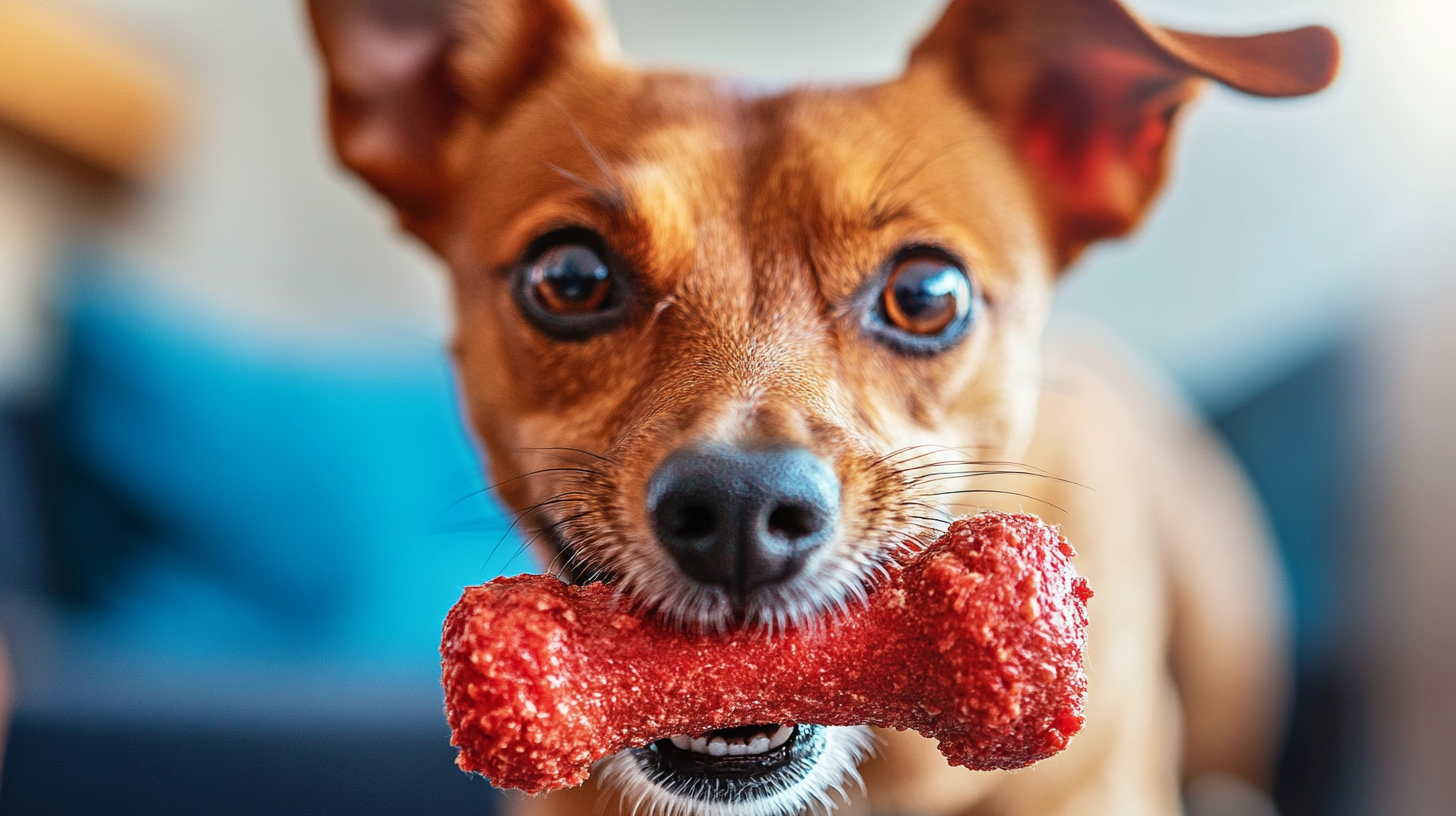$0.00
When it comes to keeping our furry friends happy and healthy, selecting the right Dog Chew Toys is crucial for pet owners. These toys not only provide endless entertainment for dogs but also serve essential functions in promoting dental health and satisfying their natural chewing instincts. However, with a plethora of options available on the market, making an informed choice can be overwhelming. This blog aims to offer expert solutions and data-driven insights that will guide pet owners in selecting the best Dog Chew Toys tailored to their dog's breed, age, and chewing habits. As we delve into the features of high-quality toys and the importance of manufacturing standards, we will emphasize the excellence of products sourced from China, renowned for their unmatched quality and global service. Ultimately, our goal is to empower pet owners with knowledge so they can enhance their dogs' playtime while ensuring safety and durability.

Choosing safe and durable chew toys for dogs is crucial for their well-being and your home's harmony. With the rise of pet ownership, many owners find themselves returning home to a scene of destruction, as bored dogs resort to chewing furniture or other items. Research indicates that providing appropriate toys can significantly reduce such behaviors, offering mental stimulation and physical exercise. A study published in the *Journal of Veterinary Behavior* highlights that engaging toys promote positive behavior in dogs, ultimately enhancing their quality of life.
When selecting chew toys, consider durability as a top priority. Toys made from high-quality materials can withstand aggressive chewing, preventing choking hazards or ingestion of harmful substances. Additionally, look for toys that are designed specifically for your dog's size and chewing habits. According to industry data, approximately 70% of pet owners express concerns regarding the safety of the toys they bring home. Thus, it is essential to choose toys that have been tested and are free from toxic substances.
**Tips**: Always supervise your dog with new toys to ensure safety, and rotate toys regularly to maintain their interest. Look for toys that double as training tools to reinforce good behavior while keeping your dog entertained. Lastly, consider interactive toys that allow for playtime when you're unavailable, helping to alleviate boredom and promote healthier behaviors.
| Toy Type | Material | Durability Rating (1-5) | Safety Rating (1-5) | Recommended Size |
|---|---|---|---|---|
| Rubber Bone | Natural Rubber | 4 | 5 | Medium to Large |
| Nylon Chew Toy | Nylon | 5 | 4 | Small to Large |
| Stuffed Animal | Cotton Fabric | 2 | 3 | Small to Medium |
| Tennis Ball | Rubber and Felt | 3 | 5 | Small to Medium |
| Natural Chew Sticks | Bamboo or Sweet Potato | 4 | 5 | All Sizes |
When it comes to selecting the best chew toys for our canine companions, understanding the preferences of dog owners can provide valuable insights. Recent industry statistics reveal that approximately 70% of pet owners consider durability the most critical factor when choosing chew toys, followed closely by safety features and the materials used. This shows that a strong, long-lasting toy not only keeps dogs engaged but also offers peace of mind for pet owners concerned about their dog's well-being.
To help you make informed choices, consider these tips: First, look for chew toys made from non-toxic materials, such as natural rubber or nylon, which are not only safe but also promote healthy chewing habits. Second, assess your dog's chewing strength and size to ensure the toy is appropriate for them—puppies may benefit from softer toys, while aggressive chewers might require a sturdier option. Lastly, observe your dog's play style. Some dogs prefer interactive toys that squeak or dispense treats, while others enjoy chewing on solid toys. Tailoring your selection to your dog’s habits ensures they remain entertained and safe.

When selecting chew toys for your dog, the materials used in their construction are crucial for both safety and durability. Recent evaluations of 25 dog toys specifically designed for tough chewers revealed that those made from robust rubber and high-denier nylon stand out as the most reliable choices. Products that are BPA-free and free from harsh chemicals further ensure that your furry friend is safe as they chew.
Tip: Always look for toys that have been tested for durability and do not contain harmful substances. Choosing toys with varied textures can also engage your dog better and promote dental health.
Additionally, opting for eco-friendly toys made from recycled materials can benefit the environment while still satisfying your dog's chewing instincts. Engaging in playtime with interactive toys that dispense treats can also enhance your dog's mental stimulation. Research indicates that mental engagement contributes to calmer behavior overall, making it essential to incorporate a variety of toys into your dog's routine.
Tip: Rotate your dog's toys to maintain their interest and prevent boredom. By regularly introducing new textures and play styles, you can keep your pet mentally sharp and physically active.
 When selecting the best dog chew toys, a comparative analysis of lifespan based on user reviews and sales data provides valuable insights for pet owners. A recent industry report indicates that high-quality rubber and nylon chew toys tend to last 30% longer than their cheaper plastic counterparts. The data suggests that durability significantly affects user satisfaction, with 85% of long-term users noting superior lifespan as a key reason for their product choice.
When selecting the best dog chew toys, a comparative analysis of lifespan based on user reviews and sales data provides valuable insights for pet owners. A recent industry report indicates that high-quality rubber and nylon chew toys tend to last 30% longer than their cheaper plastic counterparts. The data suggests that durability significantly affects user satisfaction, with 85% of long-term users noting superior lifespan as a key reason for their product choice.
To ensure you're choosing the right chew toy, consider the material. For instance, rubber toys are often recommended for aggressive chewers, while softer toys may suit gentler breeds. Look for toys with proven durability and positive user feedback to maximize longevity.
When it comes to selecting the best chew toys for your canine companion, veterinarians emphasize the importance of safety and dental health. Many vets recommend rubber or nylon toys due to their durability and the ability to withstand aggressive chewers. These materials not only help clean your dog's teeth but also reduce the risk of choking or swallowing harmful pieces. Always opt for toys that are appropriately sized for your dog to prevent any accidents.
In addition to material, veterinarians suggest considering your dog's individual chewing habits and preferences. For instance, some dogs may benefit from softer toys that soothe teething discomfort, while others might prefer hard toys that provide more resistance. Interactive toys that dispense treats can also engage your pet mentally and physically, promoting overall wellness. By taking the insights of veterinary professionals into account, pet owners can make informed choices that support their dog's health and happiness.
This chart displays the preferences of pet owners regarding different types of dog chew toys based on a survey conducted among veterinarians and pet owners. The data reflects the percentage of pet owners who prioritize specific features in chew toys for their canine companions.